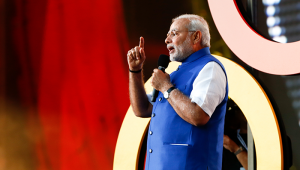By Judith Ugwumadu | 6 January 2015
India’s government must start building a ‘pension net’ for workers in the private sector now to avoid bearing the fiscal burden of providing for those who end up having no pension at all in their old age, according to Crisil Research.
The Standard and Poor’s company said there were nearly 100 million people aged over 60 in India today, a figure which is set to triple to 300 million by 2050.
It has urged the government to start building a social security net now, to help the retirees who would otherwise be left financially insecure ‘in their sunset years’.
Under the National Old Age Pension scheme, introduced in India in 1995, central government provides INR 200 ($3.15) per month per person to all from 60 – 79 years who are living below the poverty line. Those aged 80 years and older receive INR 500 ($7.88) per month per person.
Crisil’s report, entitled When India ages, whither pensions for all?, stated: ‘If a large number of the old end up having no pension by 2030, the government will have to bear the heavy fiscal burden of providing minimum sustenance to them.’
Currently, only 8% of India’s private-sector retirees get a pension although coverage is better in the public sector. A manifold increase in pension coverage to the private sector workforce was therefore imperative, Crisil said.
Dharmakirti Joshi, chief economist at Crisil, said: ‘India is not the only country set to witness a steep increase in old-age dependency. Indeed, the proportion of its old people will be less than those of several countries and also the world average in 2030.
‘But the rise from where we stand today will be steep – hence the need to act fast.’
Crisil’s managing director and chief executive officer Roopa Kudva added that the fiscal cost of ageing in India needed to be moved to the forefront of discussion.
‘Unless addressed, this cost can be onerous in coming decades,’ she said.
‘The fiscal burden of pension ranging from 3.4% to 4.1% of GDP in 2030 is high. In comparison, the central government today spends 3-3.4% of GDP on education and just over 1% of GDP on medical and public health, water supply and sanitation.’













